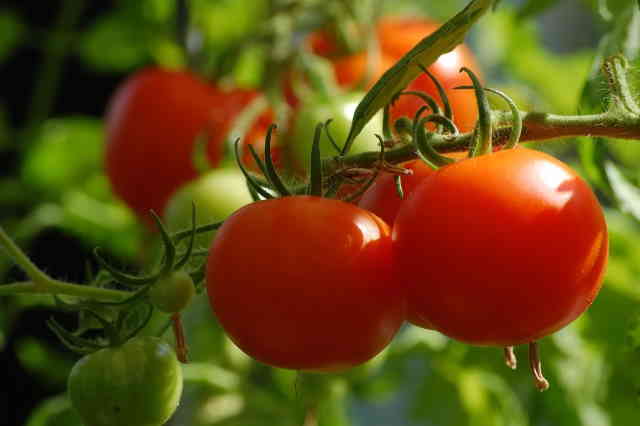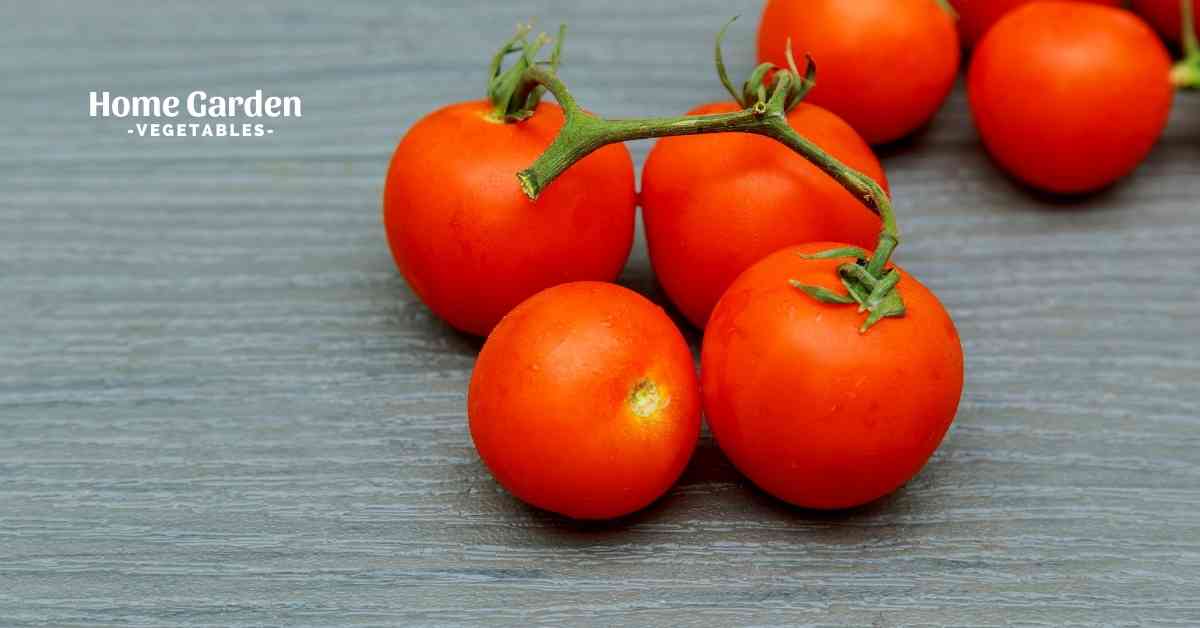Taking care of the tomato crop, watering it and feeding it through the entire season, only to fall prey to fungus before you can harvest even a single fruit is an utter disappointment. It’s no myth that fungal diseases like Early blight, Late blight, Verticillium wilt and fusarium wilt, can easily sabotage a potentially healthy crop. Other fungal diseases like Anthracnose fruit rot and Buckeye rot attack the fruit and render it inedible in most cases.
Reader Poll: What online courses would interest you?
Since management is not always effective, prevention is the best. Growing fungus resistant tomato plants can help save your crop against a range of diseases and secure a healthy harvest. Continue reading and you’ll find the most resistant species to plant in your garden.

Codes For Fungal Diseases
One of the major reasons for the development of modern hybrid tomatoes is their improved resistance to diseases in contrast to the heirlooms. Despite the efforts of researchers, no single hybrid is created that’s resistant to all the fungal diseases. Different hybrids are resistant to a specific set of diseases which is identified through the plant labels. Unless you understand how to read these labels, you’ll have problems picking the right hybrid to grow in your garden.
Just learn the most prevalent fungal diseases in your area and then select the cultivar that’s resistant to those. For example, if tomato crops have been attacked by Early blight in the past growing season in your garden, choose a hybrid variety that’s resistant to Early blight. Check for the following codes on the seed packet or plant label. The following codes on the plant indicate that the hybrid is resistant to those specific diseases:
Subscribe to our newsletter!
- AB – Alternaria Blight
- A – Anthracnose
- AS – Alternaria Stem Canker
- CRR – Corky Root Rot
- EB – Early Blight
- F/FF/FFF – Fusarium Wilt (races 1, 2 and 3)
- FOR – Fusarium Crown and Root Rot
- LB – Late Blight
- LM – Leaf Mold (Races A – E)
- PM/On – Powdery Mildew
- St/GLS – Grey Leaf Spot
- V/Va/Vd – Verticillium Wilt
Understanding Plant Labels For Fungal Disease Resistance
Typically, each hybrid variety will have more than one disease resistance code mentioned on the label. For example, if the plant has a label that says ‘VFNT’, it means that the specific cultivar is resistant to Verticillium wilt, Fusarium wilt, nematodes and Tobacco mosaic virus. Choose a variety that’s resistant to all of the diseases prevalent in your garden pr region.
Understanding Resistance Levels
Sometimes, the level of resistance to that particular disease may also be mentioned in the label. Here’s how to read the disease resistance level:
- HR – High Resistance
- IR – Intermediate Resistance
List Of Fungus Resistant Tomato Varieties
Here’s a list of tomato varieties, sorted by type, that are resistant to the most common fungal diseases found in tomato crops.
Cherry Tomatoes
- Aligote F1 – Fusarium Wilt (1, 3 and 3)
- Apero F1 – Fusarium Wilt, Leaf Mold
- Braveheart F1 – Fusarium Wilt 1, Gray Leaf Spot, Leaf Mold
- Cherry Bomb F1 – Late Blight
- Fonzi’s Pinky – Fusarium Wilt 2, Fusarium Crown & Root Rot, Gray Leaf Spot, Leaf Mold
- Jasper F1 – Alternaria Blight, Early Blight, Fusarium Wilt 1 and 2, Late Blight
- Matt’s Wild – Early Blight, Late Blight
- Mt. Magic F1 – Fusarium Wilt, Fusarium Wilt 1, 2 and 3, Early Blight, Late Blight, Verticillium Wilt, Alternaria Blight, Alternaria Stem Canker and Corky Root Rot
Grape Tomato
- Amai – Fusarium Wilt 1 and Gray Leaf Spot
- Carmesin – Fusarium Wilt 1, Fusarium Wilt 2, Fusarium Crown & Root Rot and Gray Leaf Spot
- Conde – Fusarium Wilt 1, Fusarium Wilt 2, Fusarium Wilt 3, Fusarium Crown & Root Rot, Leaf Mold, Verticillium Wilt 1 and Verticillium Wilt 2
- Ruby Crush F1 – Fusarium Wilt 1, Fusarium Wilt 2, Fusarium Crown & Root Rot and Gray Leaf Spot
- Scarlet Star – Fusarium Crown & Root Rot and Gray Leaf Spot
- Sweet Hearts F1 – Fusarium Wilt, Fusarium Wilt 1, Gray Leaf Spot and Leaf Mold
Plum Tomato
- BHN-685 F1 – Fusarium Wilt 1, Fusarium Wilt 2, Fusarium Wilt 3 and Verticillium Wilt
- Cedro – Alternaria Stem Canker, Fusarium Wilt 1, Fusarium Wilt 2, Fusarium Wilt 3, Verticillium Wilt 1 and Verticillium Wilt 2
- Granadero F1 – Fusarium Wilt, Fusarium Wilt 1, Fusarium Wilt 2, Powdery Mildew, Verticillium Wilt, Verticillium Wilt 1 and Verticillium Wilt 2
- Indigo Rose – Early Blight, Late Blight and Powdery Mildew
- Juliet F1 – Alternaria Blight, Early Blight, Late Blight and Septoria Leaf Spot
- Mariana F1 – Alternaria Stem Canker, Fusarium Wilt 1, Fusarium Wilt 2, Gray Leaf Spot, Verticillium Wilt, Verticillium Wilt 1, Verticillium Wilt 2
Slicer Tomato
- Arbason F1 – Fusarium Wilt, Fusarium Wilt 1, Verticillium Wilt, Verticillium Wilt 1, and Verticillium Wilt 2
- Bella Rosa F1 – Alternaria Stem Canker, Fusarium Wilt 1, Fusarium Wilt 2, Gray Leaf Spot, and Verticillium Wilt
- Better Boy F1 – Alternaria alternata, Alternaria Stem Canker, Fusarium Wilt, Fusarium Wilt 1, Gray Leaf Spot, Late Blight, Verticillium Wilt, and Verticillium Wilt 1
- Brandywise – Early Blight, Fusarium Wilt, Late Blight, Septoria Leaf Spot, and Verticillium Wilt
- Celebrity F1 – Alternaria alternata, Alternaria Stem Canker, Fusarium Wilt, Fusarium Wilt 1, Fusarium Wilt 2, Gray Leaf Spot, Verticillium Wilt, Verticillium Wilt 1, and Verticillium Wilt 2
- Grand Marshall: Alternaria Stem Canker, Fusarium Wilt 1, Fusarium Wilt 2, Gray Leaf Spot, Verticillium Wilt 1, and Verticillium Wilt 2
- Jolene: Fusarium Wilt 1, Fusarium Wilt 2, Fusarium Crown & Root Rot, and Verticillium Wilt 1
- Medusa F1: Late Blight, Verticillium Wilt
- Scarlet Red F1: Alternaria Stem Canker, Fusarium Wilt 1, Fusarium Wilt 2, Gray Leaf Spot, Verticillium Wilt, Verticillium Wilt 1, Verticillium Wilt 2
Conclusion
Now that you have a list of fungus resistant tomato plants to grow, choose varieties that are well suited to your garden and start a vegetable garden. Within just a few months, you’ll have a vigorous, healthy crop, laden with fresh, homegrown tomatoes to pick!

